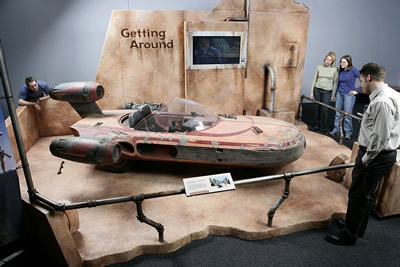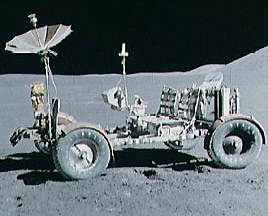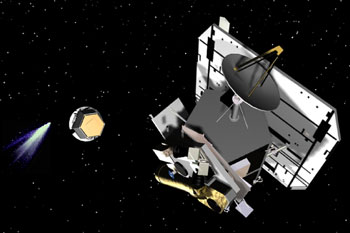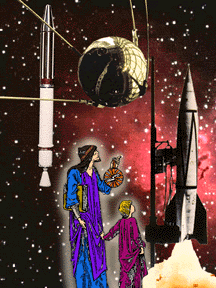Click on image for full size
Exploring Space
For as long as there have been people on Earth, we have looked up at the sky and wondered about the Sun, Moon, stars, and spectacular events we saw there. But it is only in the past 40 years that we developed the technical ability to leave our planet and actually visit other bodies in the universe.
After World War II, both the United States and the Soviet Union created programs to build rockets powerful enough to make space travel possible. What then followed was a race to travel into space with unmanned probes and manned spacecraft.
During the last four decades, hundreds of satellites, probes and space shuttles have been launched, which have explored near-Earth space, travelled to the Moon, the Sun, and to all the planets except Pluto. And, with entire laboratories already in orbit around Earth and telescopes exploring more and more of our universe, space research is still continuing. Talk of future developments includes building a base on Mars, searching for life in other galaxies, and other exciting programs.
You might also be interested in:

A new museum exhibit shows that some of the robots, vehicles and devices from the Star Wars films are close to the types of things scientists have developed to use in space. The exhibition--at the Science
...more
The Hubble Space Telescope (HST) is really neat! It was first launched in 1990, but scientists started building it in the 1970's! We have found all kinds of objects like stars, nebulae and galaxies. The
...more
Apollo 11 was the first mission that landed a person on the moon. On July 16, 1969, the U. S. rocket Saturn 5 was launched carrying the lunar landing module Eagle. The Eagle was released and it reached
...more
Apollo 12 was launched on Nov. 14, 1969 and arrived at the Moon three days later. Astronauts Charles Conrad and Alan Bean descended to its surface, while Richard Gordon remained in lunar orbit aboard the
...more
Apollo 15 marked the start of a new series of missions from the Apollo space program, each capable of exploring more lunar terrain than ever before. Launched on July 26, 1971, Apollo 15 reached the Moon
...more
NASA chose Deep Impact to be part of a special series called the Discovery Program. This program is for cheap, scientific projects. In May 2001, NASA said it was ok to start with mission development for
...more
Galileo was a spacecraft that orbited Jupiter for eight years. It made many discoveries about Jupiter and its moons. Galileo was launched in 1989, and reached Jupiter in 1995. The spacecraft had two parts.
...more















